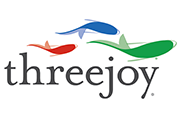I am writing this from Atlanta Hartsfield Airport (ATL), returning from a delightful session with approximately 40 faculty members at Universidad Técnica Federico Santa María (UTFSM) in Valparaiso, Chile on “From I Know to We Trust & Beyond: Deep Faculty Development in an Uncertain & Creative Era.” The program was sponsored by LASPAU at Harvard, and this was the second time I had worked in this program at UTFSM. One of the nice things about working in another country is it helps you notice the assumptions built into your own culture and language. The session was translated simultaneously from English to Spanish (and vice versa), and an issue came up around the Spanish term for assessment.
Assessment was being translated as evaluación (or evaluation), and the distinction that I was trying to make was the usual coaching and speech acts distinction between an assertion, a speech act committed to expression of truth, and an a assessment, a speech act expressing an opinion, interpretation. There was a trained coach among the faculty attending the course and he wondered whether a better translation wouldn’t have juicio (judgment). This led to a fairly lengthy clarification of the intended usage of the terms, which was helpful to the group in pursuing our work together.
In reflecting on the episode, I think there are three lessons to be learned, and here I move from particular to general.
Lesson 1: Separating assertions and assessments is critical to improving communication. The main intent of the session was to help the group understand how assessment-laden our speech and stories are and that understanding that others may have other interpretations of what’s going on is an early awareness that can help improve communication, fairly immediately. The session reinforced this lesson, and the additional emphasis brought about by being slightly “lost in translation” for a time was helpful to increasing understanding, I believe.
Lesson 2: Distinguishing between assessments and judgments is also a communication-improving move. Discussing the translation of “assessment” as juicio was also useful part of the episode. All judgments are assessments, but not all assessments are judgments. Judgments contain a sense of correctness (right/wrong) and prescription that ordinary assessments need not have. As Marilee Adams points out in her choice map, once we are in judgment it is difficult to be open enough to learn or gain additional perspective. This doesn’t make judgment a bad thing; it simply suggests judging is a choice, and if has become a reflex, it may not be serving us as well as a more judicious spectrum of assessment.
Lesson 3: We attach our normal sense of term to others’ usage at our peril. As this episode unfolded, I was a bit puzzled at first. I had been fairly careful to define my terms fairly carefully and give the sense of the terms assessment and assertion that I intended. Nonetheless, language is loaded, and we all use and interpret terms according to our own sense of them. Within a particular discipline this can be a useful shortcut to mutual understanding, but if we are learning something new outside of the boundaries of our usual experience and knowledge, assuming that our private sense of a term can be a prescription for misunderstanding. In a coaching setting, a coach will almost always ask a client what they mean by the particular usage of a term, rather than assuming the coach understands the sense of a term. In a multidisciplinary setting or in a learning setting, being curious about how language is being used is an important step toward accelerating understanding and achieving shared meaning with others.
As the methodology of coaching migrates from corporate practice to the university and the classroom, these three lessons will become increasingly salient and important as ways for students and faculty to understand each other.
